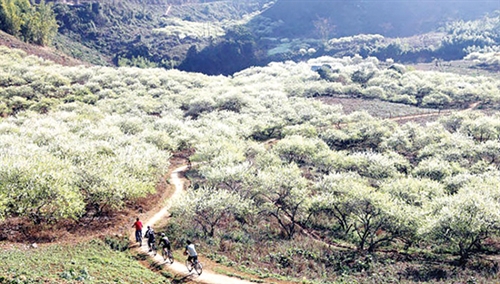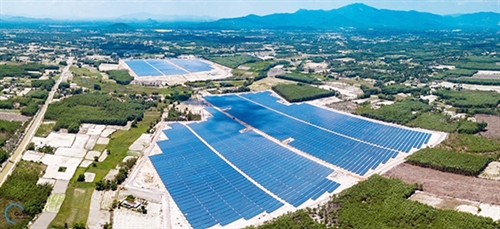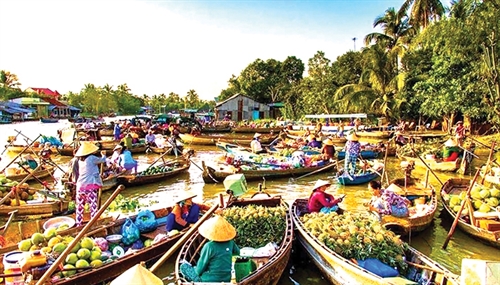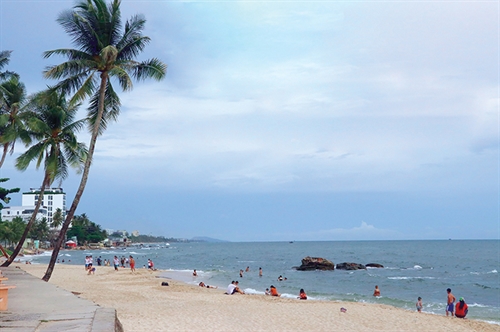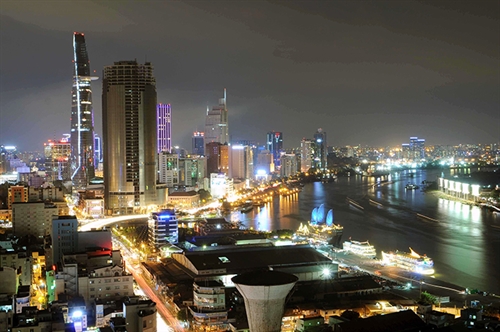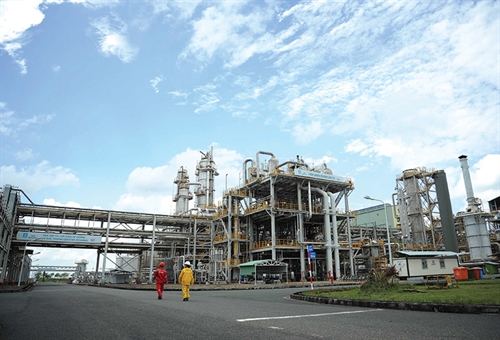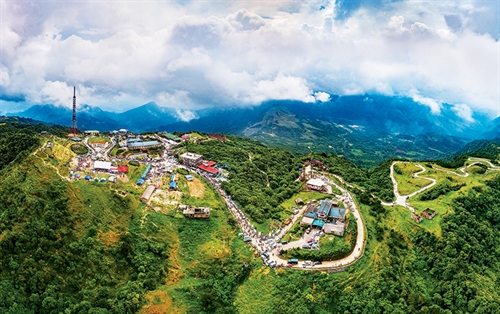“Situated in the southern key economic region, Binh Phuoc has a strategically favorable location for investment in industrial production. Therefore, turning Binh Phuoc into a modern industrial center that can dramatically attract foreign direct investment (FDI) has been a decisive goal of the local administration over recent years.” said Chairwoman of the Binh Phuoc People’s Committee Tran Tue Hien.
Sharing a borderline of 260.4 kilometers with Cambodia, Binh Phuoc province borders Lam Dong and Dong Nai provinces to the east, Tay Ninh province and Cambodia’s Tbong Khmum province to the west, Binh Duong province to the south, and Dak Lak province and Cambodia’s Mondul Kiri and Kratie provinces to the north. Covering 6,876 square kilometers, Binh Phuoc province has a population of 995,000 (according to the 2019’s statistics) and is home to many ethnic groups with Kinh (Viet) being the most populous, followed by Xtieng, Hoa, Khmer, Tay and Nung. Its capital is Dong Xoai city, two towns of Phuoc Long and Binh Long, and eight districts of Dong Phu, Chon Thanh, Hon Quan, Loc Ninh, Phu Rieng, Bu Dop, Bu Gia Map, and Bu Dang.
Binh Phuoc’s climate and land are ideal for growing industrial perennial plants such as cashew, pepper, rubber and coffee. At present, it has 137,368 hectares of cashew, 17,190 hectares of pepper, 241,800 hectares of rubber trees and 15,031 hectares of coffee plantations. The province exports cashew products to 25 countries and territories.
The border province boasts Hoa Lu international border gate, Hoang Dieu and Loc Thinh national border gates, and Tan Tien auxiliary border gate which helps boost its socio-economic development and tourism. It also serves as a bridge linking the Southeastern region with the Central Highlands and Cambodia, Laos and Thailand and an important gateway to the East-West Economic Corridor.
To promote connectivity with other localities, a number of infrastructure projects are expected to be carried out in the province. They include Highway 14C linking Binh Phuoc and Dak Nong provinces, the Ho Chi Minh City-Thu Dau Mot-Chon Thanh expressway that will stretch 70 kilometers from Chon Thanh district of Binh Phuoc province via Thu Dau Mot city of Binh Duong province to Go Dua intersection in HCM City, and the 128-km railway project from Di An station in Binh Duong province to the Hoa Lu international border gate. Worthy of note, the Prime Minister has recently agreed in principle the upgrading of provincial road 753 connecting Binh Phuoc province and Long Thanh international airport in Dong Nai province.
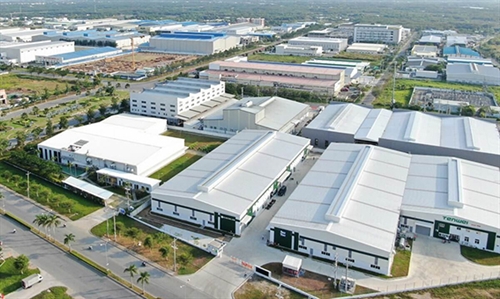 |
| Becamex Binh Phuoc industrial park__Photo: https://nhadautu.vn/ |
Bright spot for FDI attraction
According to Chairwoman of the Binh Phuoc People’s Committee Tran Tue Hien, Binh Phuoc province has been always consistent with investors’ interests and stands side by side with investors and provides them with the best support as it considers investors’ success its own. In particular, Binh Phuoc province has been facilitating quick site clearance and quick completion of investment formalities and provided good policies, good infrastructure and good sentiment to create favorable conditions for investors and entrepreneurs to conduct business and investment activities in the province.
With a score of 62.42 points, Binh Phuoc jumped 11 places to 50th in the 2020 Provincial Competitiveness Index (PCI) ranking thanks to its significant improvements in two out of ten sub-indices - proactive and creative provincial leadership in solving problems for enterprises and high-quality business support services.
Apart from the 28,364-hectare Hoa Lu International Border-Gate Economic Zone in Loc Ninh district, Binh Phuoc is home to 13 industrial parks (IPs) covering almost 4,700 hectares. Among them, 11 IPs have lured 334 secondary projects, including 232 FDI ones. Moreover, the province eyes the expansion of three existing IPs with an additional area of 2,500 hectares and the construction of four new ones by 2030.
According to the provincial Department of Planning and Investment, Binh Phuoc granted investment licenses to 24 FDI projects totaling USD 325.7 million and permitted 11 existing FDI projects to add more than USD 92 million in the first quarter of 2021. Despite adverse impacts of the COVID-19 pandemic, its first-quarter FDI capital surpassed the 2021 plan of USD 300 million and hit a five-year record.
The above results are attributable to the province’s efforts to simplify administrative procedures, improve the business investment environment, build e-administration, provide online public services, and organize online investment promotion conferences with the US, Canada, the Republic of Korea, Japan, Thailand, and Taiwan (China).
The province has so far attracted 301 FDI projects totally capitalized at more than USD 3.2 billion, including eight projects from the US, six from Japan and 29 from Taiwan. It is calling for a total investment of over USD 2 billion for 80 projects in the 2021-25 period, which specialize mainly in farm produce processing, manufacturing, hi-tech and supporting industries, hi-tech agriculture, logistics, and electronics.
In order to attract more investment capital, the provincial administration has offered investors with numerous incentives. Projects that are on the list of sectors prioritized for investment and will be carried out in areas with socio-economic difficulties, including Chon Thanh, Binh Long, Phuoc Long and Dong Phu districts, will enjoy a corporate income tax rate of 15 percent for 12 years. Meanwhile, investors in the Hoa Lu Border-Gate Economic Zone are entitled to a corporate income tax rate of 10 percent since they commence their production and business activities.
In addition, foreign investors, experts and technicians who work in the Hoa Lu International Border-Gate Economic Zone and their family members will be granted multiple-entry visas. Each visa is valid for up to five years.
Hospitality sector’s COVID-19 recovery efforts
Binh Phuoc is well-known for its primeval forest, breathtaking landscapes, cultural diversity of ethnic groups and historical relics that have attracted domestic and foreign tourists. One of its famous ecotourism destinations is the 26,000-hectare Bu Gia Map National Park that is home to 246 bird species, 105 mammal species and more than 70 reptile species and other endangered, precious and rare fauna and flora species. The park boasts magnificent Dak Mai and Luu Ly waterfalls, Ba Ra mount and craggy passes. Meanwhile, the 500-hectare Bau Lach grassland that is made up of 20 different-in-size grass fields in Bu Dang district is considered the masterpiece of nature.
The province is also home to the 3,200-hectare Ta Thiet military base relic site in Loc Ninh district, the 113-hectare Bom Bo village culture conservation area of the Xtieng in Bu Dang district and other historical and cultural relic sites. With 41 ethnic groups, Binh Phuoc is famous for folk songs and dances, stone musical instruments and traditional brocade weaving and alcohol brewing.
According to Deputy Director of the Binh Phuoc Department of Culture, Sports and Tourism Do Minh Trung, the province has 10 travel agents and more than 500 hotels, guest houses and homestay accommodations.
Like anywhere else in the country and the world, Binh Phuoc’s hospitality sector suffered the plummet in tourist revenues in 2020 due to cancellation of tours and hotel room bookings because of the COVID-19 pandemic.
As a result, the number of foreign visitors to the province in 2020 was down more than 55 percent year-on-year to 14,400 and the hospitality sector’s revenues dropped 31.6 percent compared to 2019 to VND 390 billion (USD 16.9 million). A number of travel firms, hotels, guest houses, and tourism destinations had to cease business and lay off a large number of tourism service staff, according to the tourism division of the Binh Phuoc Department of Culture, Sports and Tourism.
With ecological, spiritual, cultural-historical and weekend tours, the hospitality sector expects to receive around 1.28 million tourist arrivals, including 43,000 foreign arrivals, and earn a turnover of around VND 696 billion (USD 30.1 million) this year.
To overcome impacts of the pandemic, the sector will consult the provincial People’s Committee on support policies for tourism service providers in devising tourism promotion schemes for peak season which falls on May, June and July. It will also propose banks to reduce lending rates for tourism companies and reduce entrance fees. Other solutions include continuing tourism promotion activities in traditional and potential markets; updating information on the situation of the pandemic and measures to prevent and control the pandemic resurgence; and taking measures to ensure safety and environmental sanitation for tourists.-

